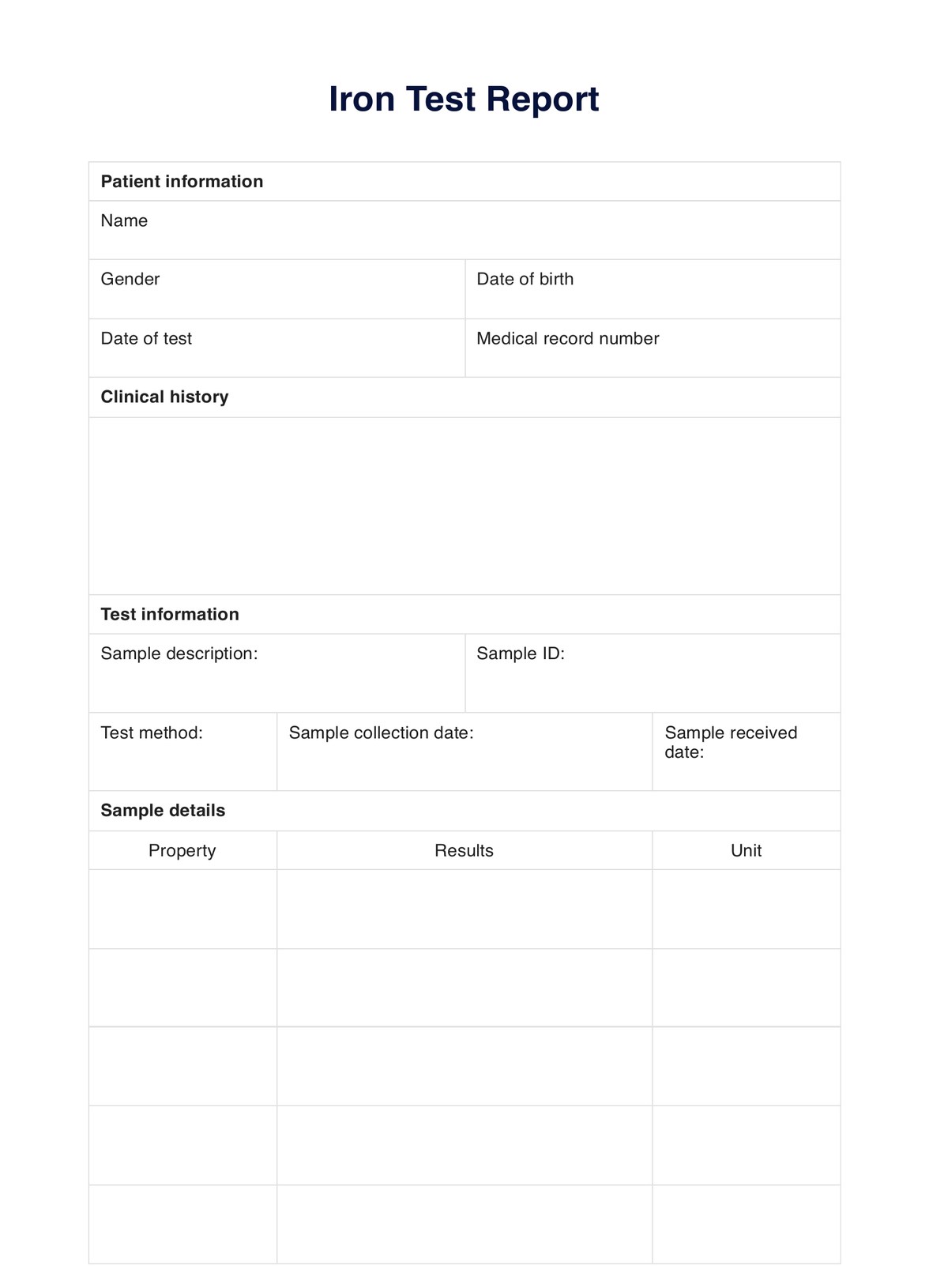Healthcare providers may request an Iron Test for patients exhibiting symptoms of low or high iron levels or those at risk for certain health conditions.

Iron Test Reports
Download a free Iron Test Report template and easily document patient results. Get the free PDF template and example here.
Use Template
Iron Test Reports Template
Commonly asked questions
Certain medications, vitamin supplements, and recent blood transfusions can affect the accuracy of an Iron Test.
Iron Tests are used to diagnose or monitor conditions related to iron levels, such as anemia, hemochromatosis, and liver disease. They may also be used to evaluate the effectiveness of treatments for these conditions.
EHR and practice management software
Get started for free
*No credit card required
Free
$0/usd
Unlimited clients
Telehealth
1GB of storage
Client portal text
Automated billing and online payments











